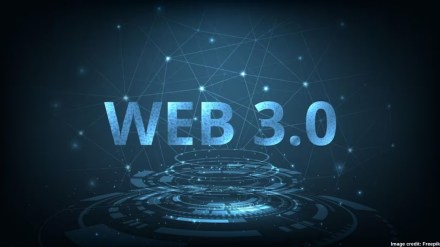By Sumit Gupta
As the paradigm of Web3 continues to evolve, it is imperative that the international community takes a proactive and collaborative approach toward regulation. The decentralization of the internet and the proliferation of peer-to-peer transactions present unprecedented opportunities.
In this context, a unified regulatory framework that transcends geographical borders and brings together nations, regulators, industries, civil society, and experts is crucial. The development of a common taxonomy, the establishment of regulatory principles, the sharing of information, the setting of minimum standards, and the creation of a comprehensive implementation strategy would allow for a coordinated response to the challenges currently posed by Web3. Only through this cooperation can we harness the full potential of this new era of the internet and ensure that it remains safe and secure for all users.
Common taxonomy
The Web3 ecosystem is large and fast evolving. Not only does it involve a rapidly expanding list of players, but it also encompasses under its ambit, many transformative technologies. For instance, the crypto-assets ecosystem, which is a fundamental of the Web3 space, includes over 20,000 crypto-assets with a wide variety of features. There are also several players conducting different activities in this ecosystem, such as custody service providers, exchanges, DAOs, the underlying blockchain protocol, the foundation running the protocol etc. This list is expanding rapidly. As a first step towards regulation, it is imperative to map every nuanced aspect of this space and develop a common taxonomy for it. Keeping in mind the dynamic nature of this ecosystem and with the overarching objective of promoting innovation, the taxonomy should be flexible and principle based.
Establishing regulatory principles
Different countries may choose to take varying approaches to regulate Web3. However, it is necessary to consolidate global consensus around the fact that Web3 is the future of the internet. The technologies that fall within its ambit are here to stay and their regulated development will be pivotal for our common digital future. This sentiment has also been echoed by several standard-setting bodies and international organisations and should feature prominently in global regulation.
Accordingly, common regulatory principles are imperative. These principles may include fostering innovation, controlling illicit activities, protecting consumers and investors, maintaining the freedom and neutrality of the internet, ensuring global economic stability, addressing climate impact, promoting fair competition and ensuring global cooperation.
Enabling information sharing
A key aspect of regulating the Web3 space is ensuring transparency in cross-border crypto-asset transactions to prevent illicit activities like money laundering, terror financing, and tax evasion. A global framework for collecting and automatically exchanging information on these transactions is necessary for this purpose. The compliance framework should balance protecting investors and preventing illicit activities while not hindering innovation and competition.
Setting minimum standards
In order to facilitate the overarching objective of promoting global Web3 regulations, it is important to develop minimum policy and technology standards that countries across the globe undertake to adopt. These standards serve to address a range of issues in the realm of virtual assets. Some of the topics covered under the minimum standards include common definitions and classifications, consumer protection norms, guidelines for minimum data collection and transaction monitoring, due diligence to prevent illicit activities, transparency through disclosure requirements, licensing for virtual asset service providers, technical standards for cybersecurity, measures to reduce negative environmental impact, and standardized audit requirements.
While prescribing these standards, it is also important to account for the different infrastructure, enforcement, and administrative capabilities of different nations. The G20 Summit has undertaken to focus on the concerns of developing countries and the global south. This presents an opportunity to develop a global framework that is equitable and can be enforced by developed and developing nations alike.
Building capacity
Web3 is a complex subject, riddled with nuances and idiosyncrasies. It is imperative that a specific focus is laid on building capacity to effectively regulate this space. Such endeavours should focus on building capacity not just at a regional level, but also at the international level, equipping standard-setting bodies and international organisations to handle this dynamic space. There is also a pressing need for capacity building to be an ongoing process, with collaboration at its core. This space will benefit not only from the collaboration between nations but also from private stakeholders’ and technical experts’ efforts to share knowledge and expertise.
Implementation strategy
The G20 nations, under India’s Presidency, should evaluate the merits of establishing such a body. This body can then subsequently undertake global stakeholder consultations and develop a model regulatory framework. It can also facilitate the adoption of such a framework through multilateral instruments in a phased manner. The establishment of this body can also streamline other efforts that require global cooperation, such as a capacity building.
The author is co-founder and CEO, CoinDCX
